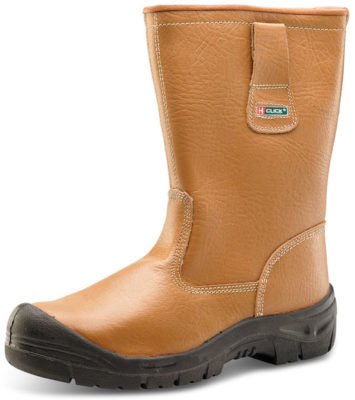It is important that you ensure you are selecting the correct footwear for your specific working environment.
Here at Total Site Safety, we would recommend that in the first instance a risk assessment is carried out to ensure that the correct protection level and style of footwear is selected.
Risk Assessment
Assess the risks within the working environment to either remove or protect against the hazards.
This must involve defining the job or work area, recognising the risks, and identifying the correct method of reducing them.
That is for instance by removing, controlling, or by choosing suitable safety footwear.
Safety features include:-
- Impact resistant toe caps
- Pierce resistant midsoles
- Anti static soles
- Sole resistance to heat
- Resistance to cold
- Water resistance
- Resistance to fuel oil
- Resistance to chemicals
- Slip resistant sole properties
Materials and construction
There are various methods of attaching the sole of the footwear to the upper material; this has some considerable influence on product selection depending on the environment in which the footwear will be used.
- Direct injection moulding – Again a strong construction method used with either one density of polyurethene (known as single density) or two densities, either polyurethene or an inner density of polyurethene and an outer later of nitrile rubber (known as dual density). Both types provide reduced weight with improved comfort and flexibility, without any compromise in performance.
- Goodyear Welted – Another traditional form of construction where the sole is stitched to the upper material. Again a very strong method, which would generally be slightly heavier in use than the above. Suitable for most dry environments.
- Cemented – This is exactly what it suggests; the sole unit is preformed and cemented (glued) onto the upper material creating a strong bond.
- Cushioned soles – when standing for long periods of time.
- Wellington boot – The vast majority of wellingtons in use are direct injection moulded from either raw PVC with varying quantities of nitrile rubber or polyurethene. Both types provide excellent flexibility and resistance to chemicals.
Selecting the correct footwear – materials
Selecting the correct materials is critical, especially when contaminants are present.
By choosing the correct material, the maximum lifespan of footwear can be achieved.
- Nitrile rubber sole – for higher temperatures, oil and solvent resistant.
- Polyurethene soles – for general purpose use, oil and solvent resistant.
- Water repellent leather uppers – where there is an occasional exposure to water
- PVC, PVC Nitrile, rubber and polyurethene uppers – where there is long terms exposure to water and certain chemical applications.
We hope you have found our guide on selecting the correct footwear for your industry helpful.
Do you need good quality safety Footwear, Site safety wear or consumables? Then you’re in the right place! We have a large range of products to choose from on our website, all at great prices.
Can’t find what you’re looking for? Then give us a call on 0330 0885 675 and one of our friendly team will be happy to help you with your order.
Or alternatively, you can email us at info@totalsitesafety.co.uk
The post Selecting the correct footwear for the job appeared first on Total Site Safety.

